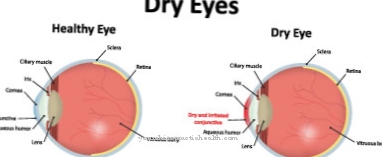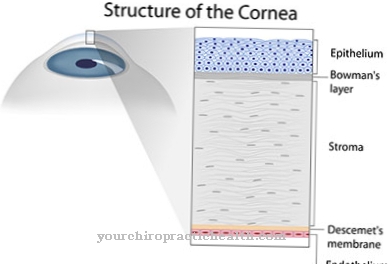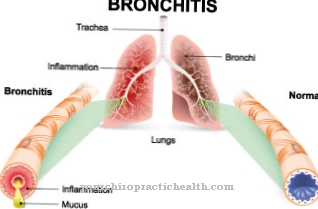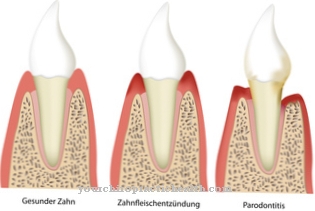At the Nicolaides-Baraitser Syndrome it is a disease that affects only a small number of people. Nicolaides-Baraitser syndrome is a congenital disease that is present in those affected from birth. Some symptoms only become apparent with increasing age. The main complaints of Nicolaides-Baraitser syndrome include anomalies of the fingers, short stature and disorders of the hairiness of the body.
What is Nicolaides-Baraitser Syndrome?

© Siarhei - stock.adobe.com
Basically this represents Nicolaides-Baraitser Syndrome an enormously rare disease. The average prevalence of the disease is estimated at around 1 in 1,000,000. People with Nicolaides-Baraitser syndrome usually suffer from symptoms such as short stature, seizures, intellectual disabilities and deformities of the fingers.
In many cases, for example, so-called brachydactyly is evident. According to previous findings in medical research, Nicolaides-Baraitser syndrome is inherited in an autosomal dominant manner. The Nicolaides-Baraitser syndrome was described for the first time by the two doctors Baraitser and Nicolaides in 1993. In honor of these doctors, the Nicolaides-Baraitser Syndrome was given its name, which is still valid today.
So far, only five cases of Nicolaides-Baraitser syndrome are known, which are described in specialist medical books. Numerous doctors use the abbreviation NCBRS to name the disease. In the English language that becomes Nicolaides-Baraitser Syndrome usually as Sparse Hair And Mental Retardation designated.
causes
In principle, Nicolaides-Baraitser syndrome is a genetic disease that affects people from birth. The individual manifestation of the symptoms is already established at birth. However, some symptoms of Nicolaides-Baraitser syndrome only develop over time or only become apparent after a certain age.
The exact cause of Nicolaides-Baraitser syndrome has been identified through medical and genetic research studies with affected patients. A gene mutation on a special gene locus is responsible for the development of Nicolaides-Baraitser syndrome. This is a new mutation in the SMARCA2 gene. The exact gene locus of the mutation is also known. Postnatal influences therefore play no role in the genesis of the disease.
Symptoms, ailments & signs
Patients with Nicolaides-Baraitser syndrome suffer from a variety of symptoms and signs of the disease. It is possible that the symptoms of Nicolaides-Baraitser syndrome differ slightly in individual cases or occur in a certain combination. Basically, a short stature is characteristic of the disease, which is noticeable at a relatively young age.
In addition, the affected people usually have what is known as hypotrichosis. In connection with this, they tend to have sparse and thinning hair growth on the head. In addition, people suffering from Nicolaides-Baraitser syndrome are characterized by various anomalies in the anatomy of the face. Microcephaly is particularly evident here.
Often, the patients also suffer from seizures and severe intellectual disabilities. There are deformities on the fingers, such as the so-called brachydactyly. Cone epiphyses and clearly defined interphalangeal joints are also possible. The latter symptom results primarily from the fact that the percentage of fat under the skin is low.
Diagnosis & course of disease
Nicolaides-Baraitser syndrome is primarily diagnosed on the basis of the characteristic clinical symptoms. First of all, there are usually first indications of the presence of Nicolaides-Baraitser syndrome at the latest after the birth. Because certain signs of the disease are comparatively clearly visible even in newborn patients.
A prenatal diagnosis is theoretically possible based on certain symptoms. Due to the rarity of the disease, however, there are hardly any empirical values. If Nicolaides-Baraitser syndrome is suspected, the patient must be examined immediately.
As a rule, the affected children are presented to a suitable doctor relatively soon after the birth to classify the anomalies. The custodians play an important role, for example, they contribute significantly to the so-called family history. In this way, the doctor receives information about possible genetic predispositions from similar cases of illness in the patient's family.
After taking the anamnesis of the sick person, the attending physician uses various examination techniques to reliably diagnose the disease. After the first visual examinations, for example, x-ray procedures are used. The malformations on the fingers can be detected. In addition, there are indications of a short stature.
The Nicolaides-Baraitser syndrome can be identified relatively reliably with the help of a genetic test. Because the responsible mutation and the affected gene locus are known. A thorough differential diagnosis is essential when diagnosing Nicolaides-Baraitser syndrome. The treating doctor must primarily rule out the so-called Coffin-Siris syndrome.
Complications
Since Nicolaides-Baraitser syndrome is a very rare hereditary disease, there is also very little empirical data on the occurrence of complications. Most of the complications are likely to result from the many cerebral seizures (epilepsy). Due to the small number of cases, no information can be given about the general life expectancy of those affected.
However, it is not uncommon for various complications to occur as a result of epileptic seizures, some of which are life-threatening. With every epileptic seizure there is, among other things, the risk of damage and injuries that are directly caused by the pronounced muscle contractions. The back muscles become extremely tense, which can often lead to vertebral fractures. Severe vertebral fractures even run the risk of paraplegia.
Furthermore, bite wounds can arise during an epileptic seizure, which are caused by a tongue bite, lacerations, cuts or lacerations. Accident injuries can also occur as part of the seizure. Here too, injuries sometimes occur that lead to paralysis or even death. During a cerebral seizure, there may also be aspiration of food particles, vomit, or fluid.
This is a life-threatening emergency that requires immediate medical intervention to prevent suffocation. After all, the severe mental handicap and the numerous physical deformities certainly have a negative effect on the child's psychological development.
When should you go to the doctor?
Nicolaides-Baraitser syndrome is a congenital disease that is usually diagnosed immediately after birth. Depending on the severity of the condition, the doctor will then immediately take further measures. Malformations of the fingers, epilepsy and short stature are typical features that must be clarified quickly. If unusual symptoms occur during therapy, the doctor must be informed. Medical advice is particularly needed if the child shows signs of mental retardation. Corresponding symptoms often only appear in the course of life and become progressively stronger. It is all the more important to have the complaints cleared up quickly.
If this is done early, an increase in the symptoms can be avoided in many cases. If the family is already aware of cases of Nicolaides-Baraitser syndrome, a genetic test can be carried out before the child is born. This enables a possible disease to be identified and preparatory measures to be taken at an early stage. The actual treatment of the malformation syndrome is carried out by a specialist in genetic diseases.
In addition, different doctors must be involved who can treat the malformations, epilepsy and mental disorders. Orthopaedists, neurologists and therapists, among others, can be considered for this. Since the child’s disease is also an enormous burden for the parents, they should also seek psychological help.
Treatment & Therapy
The symptoms of Nicolaides-Baraitser syndrome are congenital as it is a hereditary disease. For this reason, effective therapy for the causes of Nicolaides-Baraitser syndrome is not practical. Instead, it is important to alleviate the symptoms of the affected patients.
The people suffer from significant mental and physical disabilities, so that intensive care of the patients is required. As a rule, those affected receive special education if this is possible from an intellectual point of view. The guardians are supported in looking after the child suffering from Nicolaides-Baraitser syndrome.
Outlook & forecast
Nicolaides-Baraitser syndrome is one of the health disorders that is caused by a mutation in human genetics. As a result, the prognosis is unfavorable. The main reason is that the treating doctors are not allowed to change the genetic material of their patient. Legal requirements prohibit you from doing this. An additional complication is that some complaints only develop in the course of life. This can lead to a late diagnosis in some cases. However, the sooner the disease can be determined, the earlier the necessary treatment steps can be worked out.
Although no cure is to be expected for this disease, thanks to their daily research work, scientists succeed time and again in developing new therapy methods and forms of treatment that lead to an alleviation of the individual complaints. The aim is to optimize the patient's quality of life and prevent any health consequences.
Due to the physical impairment, the sick are subject to an increased risk of paraplegia. There is also a cognitive impairment. Overall, it is therefore usually not possible for the patient to organize his everyday life independently. He is lifelong dependent on the care and attention of other people. However, early intervention programs have shown significant improvements in intellectual capacity development in recent years.
prevention
Nicolaides-Baraitser syndrome is a hereditary disease, which is why there are no known options for effective prevention of the disease.
Aftercare
Since Nicolaides-Baraitser syndrome is a genetic and thus a congenital disease, in most cases those affected have very few and only very limited measures and options for follow-up care. Those affected should first and foremost consult a doctor at an early stage so that there are no other complications or complaints in the further course.
As a rule, the earlier a doctor is consulted, the better the further course of the disease, so that a doctor should be contacted as soon as the first signs of Nicolaides-Baraitser syndrome appear. Most people affected by this disease are dependent on the care and support of their own families.
Above all, loving and intensive discussions with one's own family and with other relatives are very important in order to prevent psychological complaints or the development of depression. The patients are also dependent on intensive support at school. Likewise, patients with Nicolaides-Baraitser syndrome should have regular checkups and examinations by a doctor. Usually this disease does not reduce the life expectancy of the person affected.
You can do that yourself
Due to the lack of treatment options, relatives can only provide relief from the symptoms and thus a more livable life. In addition to intensive care in everyday life, they receive help from the integration specialist office by submitting an application for severely disabled people. They are helpful in finding a suitable special school, in applying for any school attendants and aids that may be required, as well as in many other questions about a disability.
The high risk of injury due to the often frequent epileptic seizures can be reduced with the help of a specially trained assistance dog. Epilepsy warning dogs or seizure dogs, depending on their training, warn early before or in the event of an acute seizure, thereby enabling rapid help or sufficient time to take precautions. Unfortunately, the costs for this are usually not borne by the health insurance company and have to be paid for yourself. However, these expenses may be claimed as an exceptional income tax burden and thereby reduced somewhat.
Since a vacation for caring relatives can rarely be implemented as a family vacation, there is the possibility of preventive care, which can be implemented directly at the desired holiday location. This ensures loving care, daily closeness to the usual caregivers and yet sufficient free time and relaxation for the relatives.
The exchange with other affected families is often enriching through the exchange of experiences and can make everyday life easier.




.jpg)

.jpg)





















.jpg)